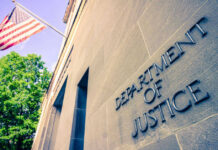
NEWS ALERT: One more life has been lost to the merciless summer heat at the Grand Canyon, and yet the real story is, sadly, how common-sense warnings continue to fall on deaf ears.
At a Glance
- A 67-year-old Texas man dies on the South Kaibab Trail during extreme heat at Grand Canyon National Park.
- Bystanders performed CPR, but the hiker could not be revived despite rapid response from National Park Service personnel.
- The tragedy occurred during ongoing extreme heat warnings and official trail closures.
- National Park Service reiterates, yet again, the dangers of summer inner-canyon hikes but stops short of enforcing stricter rules.
A Deadly Climb Against the Odds
On July 8, 2025, a 67-year-old hiker from Alvarado, Texas, set out on the South Kaibab Trail at Grand Canyon National Park. His goal: reach the Colorado River and spend the night at Phantom Ranch, a feat that would challenge even the fittest hikers. But this wasn’t a brisk autumn walk.
This was the Grand Canyon in July, where temperatures on exposed trails routinely soar past 120 degrees. Undeterred, the man turned around at Skeleton Point, only to collapse on the return ascent, below Cedar Ridge.
Bystanders tried everything—CPR, desperate pleas for help—but by the time National Park Service medics arrived, it was too late. The canyon claimed another victim, and the official investigation is now in the hands of the Coconino County Medical Examiner.
https://www.youtube.com/watch?v=CA1C5Akz8D4
The South Kaibab Trail isn’t just a tourist stroll. It’s notorious for its lack of shade and water, and the Park Service has spent years issuing warnings. Hikers are told to avoid the inner canyon between 10 a.m. and 4 p.m. during summer. The reality? Most ignore the advice, and the government does little beyond posting more signs and publishing yet another advisory. When tragedy strikes, the script doesn’t change. Cue the public statement, the investigation, and the inevitable reminder to “hike smart.” Meanwhile, park staff and volunteers are left cleaning up the aftermath again.
Warnings, Closures, and the Limits of Government Caution
This deadly incident didn’t happen in a vacuum. Extreme heat warnings were in place, and part of the River Trail was officially closed, supposedly to protect the public. Yet the South Kaibab Trail remained open, and the Park Service’s primary strategy was to “strongly advise” visitors not to hike during peak heat. There’s a pattern here: government authorities prefer to delegate responsibility to the public while preserving plausible deniability. If you’re foolish—or desperate-enough to ignore the advisories, it’s your funeral, not theirs.
The Park Service isn’t new to this type of tragedy. Every summer, as predictable as the sun rising, hikers collapse from heat exhaustion, dehydration, or pre-existing medical conditions. The agency issues more warnings, but unless you’re already reading their website or standing at a ranger station, you’re on your own. Real enforcement, like mandatory closures or permit restrictions during extreme conditions, remains off the table—because who wants the liability or the political pushback from would-be adventurers and the tourist lobby?
Policy Paralysis and the Cost of Inaction
This latest death is already sparking talk of tougher policies and the need for stronger public education campaigns. Predictably, experts are split: some want stricter controls and trail closures during hazardous heat, while others beat the drum of “personal responsibility.” The hiker’s family is left to mourn, the park staff is left to explain, and the rest of us are left to wonder why the same mistakes keep happening. Costs mount for emergency responses; the park’s reputation takes a hit; and the cycle repeats, year after year. In the grand tradition of government overreach, we get endless advisories, but when it comes to real action—decisive closures, boots-on-the-ground enforcement, or the kind of infrastructure that might actually save lives—there’s always an excuse, a study, or a bureaucrat ready to say, “We warned you.”
Meanwhile, the larger debate simmers. Balancing access and safety is the stated goal, but with the climate growing hotter and summer heatwaves more severe, the Grand Canyon’s dangers aren’t going away. The only certainty is that unless policy catches up with reality, we’ll be rereading this same story, just with a different name in the obituary.



















